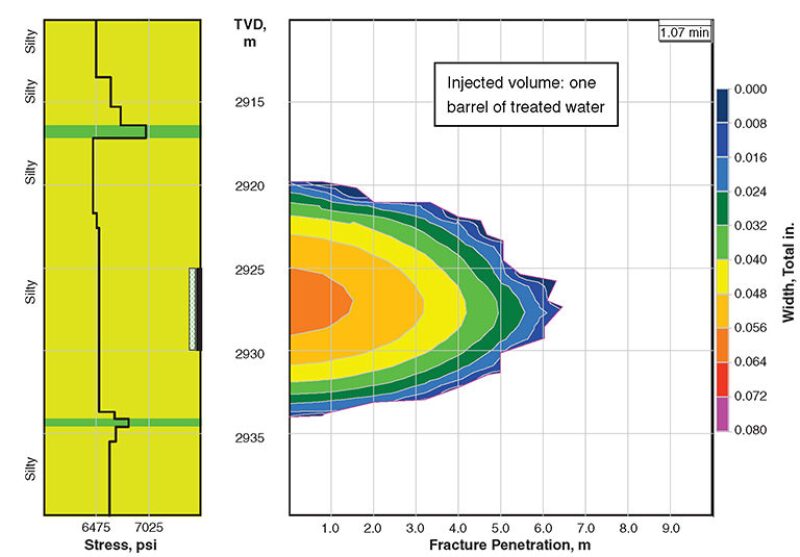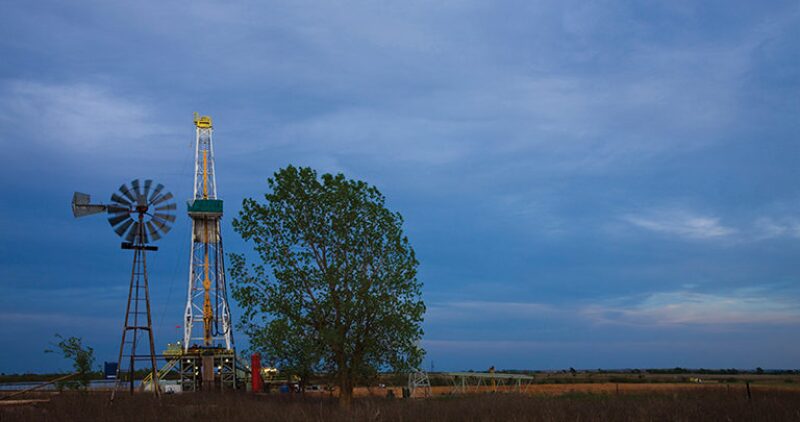Stimulation Design
Adequate stimulation is key to liquids-rich reservoir development. This session on stimulation-oriented topics placed particular emphasis on fracture complexity, effective fracture height, and other fracturing design parameters impacting production in liquids-rich systems.
Diagnostic Fracture Injection Testing (DFIT)
Dave Cramer, senior engineering fellow at ConocoPhillips, discussed the use of DFIT for characterizing liquids-rich unconventional reservoirs. The main objectives of DFIT are to acquire
- Minimum in-situ stress (fracture closure)
- Transmissibility (kh/µ)
- Pore pressure (pi)
According to Cramer, “The process starts with the creation of a small hydraulic fracture, typically requiring less than 5 bbl for a shale gas interval. Injection volume depends upon your test objective and reservoir characteristics.”
In a DFIT response, one is looking for stable response. “Fracture closure is a progressive process,” he said. “What’s driving injection is fluid leak-off.”
One can model fracture geometry (Fig. 5) based on the flow regimes in hydraulically fractured wells with residual fracture conductivity. “Even with a small injection,” Cramer said, “reservoir investigation is significant.”

One begins with a global view of the test, with a diagnostic log-log plot of pressure fall-off. “A derivative plot is used for identification of fracture closure behavior and after-closure reservoir flow regimes,” he said.
“Near-wellbore fracture complexity is influenced by wellbore azimuth, orientation, and exposure,” explained Cramer. He compared vertical and horizontal well DFITs, with vertical wells exhibiting less complexity and cleaner diagnostic signatures.
Part of his summary included the following points:
- Pseudo-radial flow development is necessary for deriving reservoir transmissibility (kh/µ) and can be hastened by limiting the injection rate and volume to minimize fracture length.
- Inject long enough to develop a stable pressure trend; this indicates that sufficient far-field fracture volume is available to enable dissipation of excess pressure resulting from fracture complexity within the near-wellbore hoop stress region.
- Near-wellbore fracture complexity has been indicated in multiple-interval vertical DFIT communication tests and is more severe in horizontal well DFITs.
- Downhole shut-in is recommended when working with underpressured reservoirs and presents several general advantages, including (1) it increases DFIT pressure responsiveness by reducing wellbore storage and (2) it facilitates the testing of multiple intervals.
Fracture Geometry
Lyle V. Lehman, managing principal consultant at StrataGen, addressed the question, “What Type of Fracture Geometry Are You Generating? Simple or Complex?” After presenting observations from fracture mapping and net pressure trends to understand what the net pressure is doing when a fracture network is evolving, he suggested what one can change to alter fracture network growth, and how to use diagnostics.
His purpose, he said, was to discuss “the process of using engineering principles to understand complexity and then take advantage of these findings and adjust staging, thus improving stimulated reservoir volume (SRV) opportunities.” He also outlined an analogous process for matrix-based reservoirs.
In identifying one’s tool kit or what affects SRV generation, he listed the following:
- Perforation spacing
- Fracture fluid volume
- Injection rate
- Proppant sizing
- Net pressure during entire treatment
- Viscosity of the fracture fluid
- 100-mesh concentration (pumped to normalize fractures) (caveat: watch 100-mesh usage—it can be your friend or your enemy)
In identifying what is not in one’s tool kit—or reservoir properties that impact SRV—he listed the following:
- Degrees of anisotropy
- Ductility—brittleness of the rock
- Location and “hysteresis” of natural flaws in the rock fabric: Are they closed, open, or something in between?
- Proximity to water-bearing formations
Lehman described the following workflow to analyze and optimize fracture geometry:
- Load data.
- Create “working plot” using surface pressure, slurry rate, and proppant concentration.
- Compare bottomhole treating pressure (BHTP) “observed” to fracture simulator Earth model generated.
- Match stress at end of job.
- Evaluate pressure trends during treatment—resolve the friction issues.
- Solve slope changes in net BHTP by manipulating multiple fracture screens (or perm if matrix-based).
He stressed the following points if one uses his approach:
- This is qualitative analysis. The answer you get is in “shades” of complexity.
- The solution will signal what probable process you are using is generating complexity and potential ways to accelerate or alter the development.
- No SRV values will be generated from this.
- You will understand if stress shadowing is occurring, which we generally feel means that spacing is too close.
Effective Fracture Height
Mike Vincent, a consulting engineer with Insight Consulting, gave the final presentation, “Effective Fracture Height: A Critical Review.” He discussed the following:
- Microseismic height: We might measure shear events beyond fracture fluid penetration
- “Wet” height: Contacted by fracture fluid
- Propped height: We do not prop the entire created fracture
- Durable or effective height: We do not sustain continuity throughout the propped fractures
- hmicroseismic ≥hwet>hpropped ≥heffective
Vincent reached the following conclusions:
- It is challenging to achieve durable, effective fracture heights even in vertical wells in which one perforates every zone of interest.
- Horizontal wells are increasingly reliant on hydraulic fractures to breach these laminations and connect thick pay zones.
- We aren’t achieving durable, effective fractures in many cases:
- Landing depth matters.
- Will be forced to infill drill on increasingly tight spacing, both laterally and vertically.
- Huge opportunity to improve fracture effectiveness:
- Effective, durable fractures would save billions of dollars in unnecessary wells.
- Don’t optimize the well spacing before optimizing the fracture design.
- There are some impressive field production comparisons demonstrating the ability to improve fracture productivity.
Knowledge-Sharing Posters
Four posters were presented:
- “Retrospective on Horizontal Wells in the Permian Basin,” by Matthew Dickson, University of Texas of the Permian Basin.
- “Residual Oil Zones (ROZ): Petroleum Engineering Perspective,” by Chad Rice, University of Texas of the Permian Basin.
- “Hybrid Fracture Jobs in the Wolfcamp,” by Vidya Bammidi, Ultra Tech Frac Services.
- “Are Longitudinal or Transverse Fractures Better for Secondary Recovery?” by Tao Xu, Colorado School of Mines.

